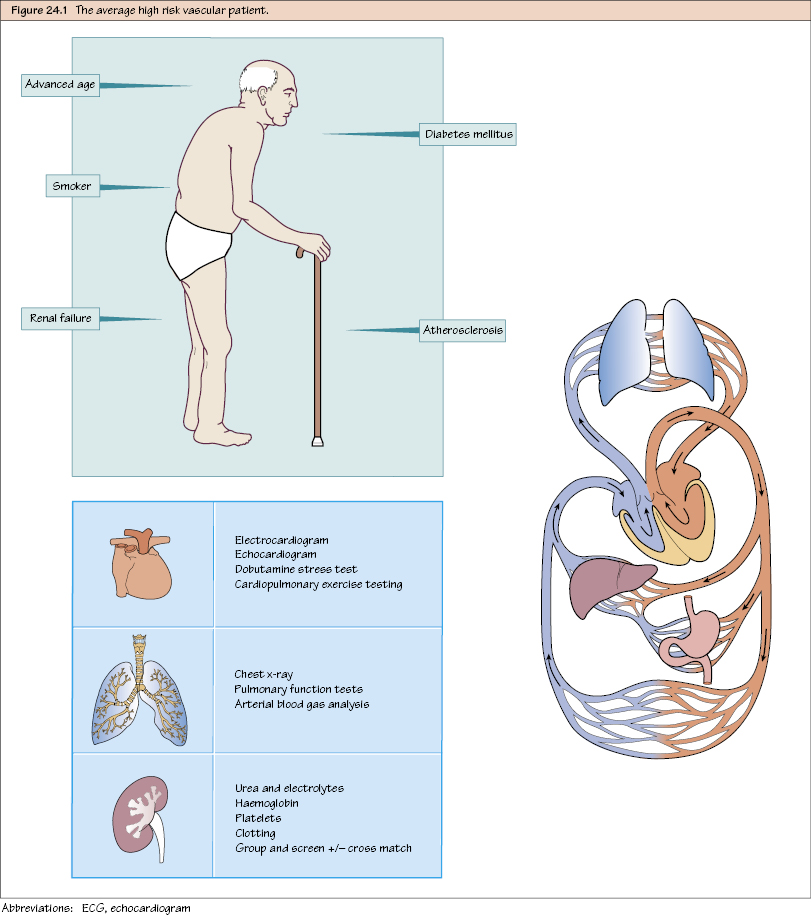Perioperative Care of the Vascular Patient Vascular patients are generally older, more likely to smoke, be diabetic and have generalised cardiovascular atherosclerosis. This means they are likely to have accrued an array of co-morbidities related to these. This latter point is fundamentally important to grasp – if a patient has peripheral vascular disease (PVD), they are very likely to also have coronary arterial disease and carotid artery disease. This means your patient is at higher risk of a MI or stroke perioperatively. Aside from the usual past medical history etc., be sure to focus specifically on identifying these co-morbidities preoperatively, so for instance: Cardiac: Do you get chest pain? Do you get shortness of breath (SOB)? Do you get palpitations? Can you walk up two flights of stairs without getting chest pain or SOB (many anaesthetists consider this the most useful question)? Carotid: Have you ever had a stroke (or TIA)? Respiratory

History and Examination
![]()
Stay updated, free articles. Join our Telegram channel

Full access? Get Clinical Tree


